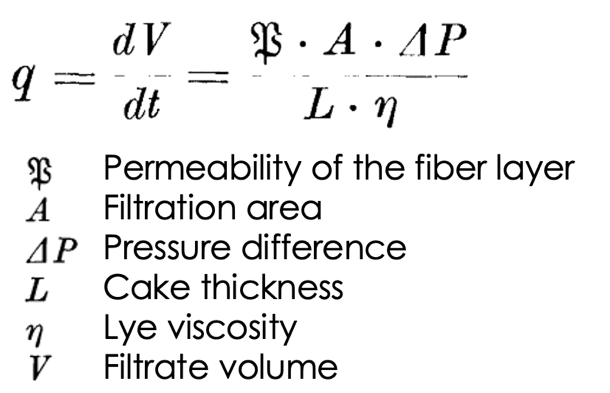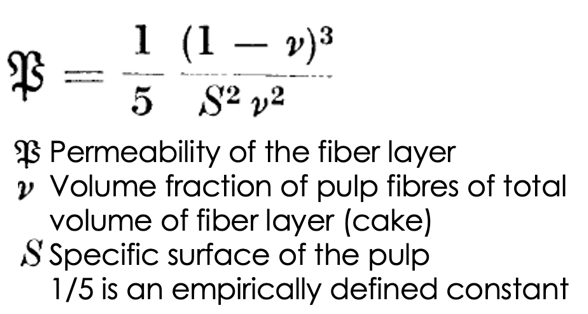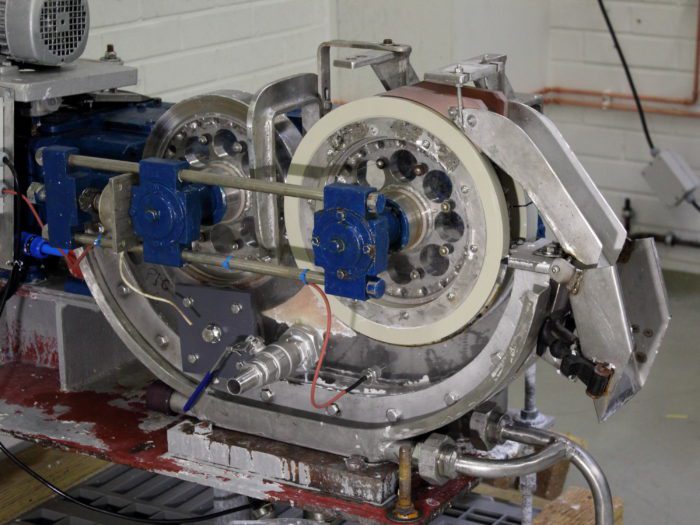Heikki Hassi, SciTech-Service Oy, April 2021
It’s well known among the manufacturers of viscose fiber and dissolving grade pulps that Alkali Cellulose (AC) presses run more efficiently with Nordic softwood pulps than with most hardwood pulps, and that the difference can, indeed, be considerable. It’s also known that mixing some (say, c.10%) softwood pulp with a hardwood pulp can improve the runnability of AC presses strongly.
The basic differences between these two pulp types are in fiber dimension and often also in fiber stiffness. Fibers of hardwood pulps are generally shorter and more flexible than Nordic softwood pulps. Eucalyptus pulps with higher fiber stiffness are a bit different from other hardwood pulps.
Why, then, does the removal of lye from pulp slurry depend so strongly on these basic characteristics of pulp?
It’s all due to basic fluid physics, and described by Darcy’s law. This law was originally formulated through tedious experimental studies with porous sand beds, carried out by Henry Darcy (1803 – 1858), a French engineer and innovator in the field of hydraulics [1]. Since then, Darcy’s law has been generalized and successfully applied to various porous media, including, e.g., layers of wood pulp [2,3].
The relevant form of Darcy’s law, indicating the parameters, which may critically affect the efficiency of lye removal in an AC press, looks like this [4]:
(q = lye flow through the pulp layer)
It’s noteworthy that, while lye flow is directly proportional to permeability, the permeability of the fiber layer is:
– Inversely proportional to the square of the specific surface of the pulp particles (fibers + fines) – which again is inversely and exponentially proportional to particle dimensions.
– Proportional to the cube of the volume fraction of pores in the pulp layer.
Furthermore, in the dynamic conditions of lye removal in an AC press (e.g., presence of alkali, elevated temperature, pressure difference applied over the pulp layer), several phenomena strongly and non-linearly affect the permeability. These phenomena include, e.g., i) compression of the fiber layer by the pressure difference, which may lead to dramatic reduction of the pore volume and permeability, ii) swelling of fiber surface in lye, reducing effective pore size, etc.
Some call the resulting situation “non-Darcial”. Nevertheless, the relationship between the basic pulp characteristics discussed above, and the efficiency of lye removal in an AC press becomes very complex.
It’s not surprising, then, that for assessing the processability of a certain pulp or a pulp blend in AC pressing, and for comparing various pulps, a “flight simulator”, i.e., a small-scale AC press is necessary. At our viscose laboratory in Espoo, Finland, we have a bench-scale Sund-type Alkali Cellulose press (pictured, below) and proven methodology for testing pulps with it. This set-up, and our professional laboratory personnel are at your service – Just contact us!
Click on the image to watch a short demo of bench scale Sund press!
References:
- Darcy, H., 1856: https://gallica.bnf.fr/ark:/12148/bpt6k624312/f1n657.pdf
- Pettersson, P.: Fluid flow in wood fiber networks. Licentiate thesis, Luleå University of Technology, 2006.
- Pettersson, P.: Fluid flow through and deformation of wood fiber networks. Doctoral thesis, Luleå University of Technology, 2009
- Treiber, E., Topham, A.: Die Maischalkalisierung. In: Chemiefasern nach dem Viskoseverfahren, edited by Götze, K., Springer-Verlag, 1967, p. 294-321.


